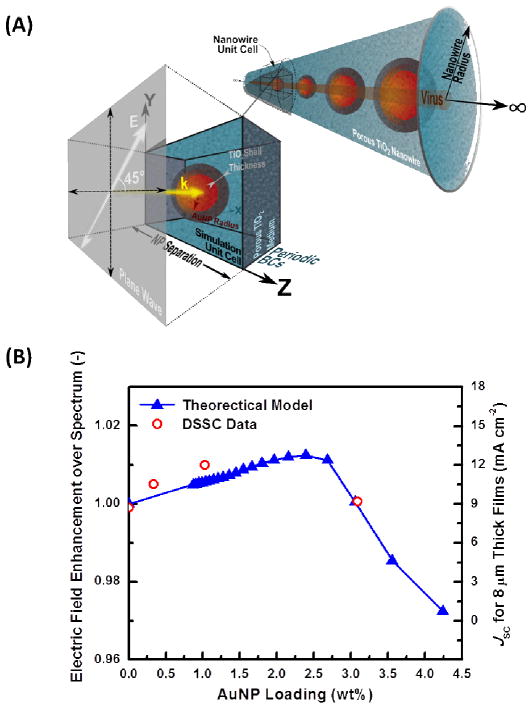Figure 9.
(A) Schematic of the model geometry. The theoretical model idealizes the plasmon-enhanced TiO2 NWs as an infinite 1D chain of regularly-spaced Au@TiO2 CS NPs that has been encapsulated in a nanoporous TiO2 cylinder. By using periodic boundary conditions in the z-direction, the optical response of the NW can be determined through evaluating only a unit cell containing a single CS with the FDTD method. (B) The dependence of the theoretically predicted optical enhancement of the DSSC devices (left axis) and experimentally measured device JSC (right axis) on AuNP concentration. The device data plotted is for films with 8 μm film thicknesses. The modeling results are specific for a porous NW radius of 90 nm with a TiO2 volume fraction of 85%, AuNP radius of 10 nm with a 5-nm-thick solid TiO2 shell, and a plane-wave injected along the x-axis with a 45° polarization as shown in part (A).

